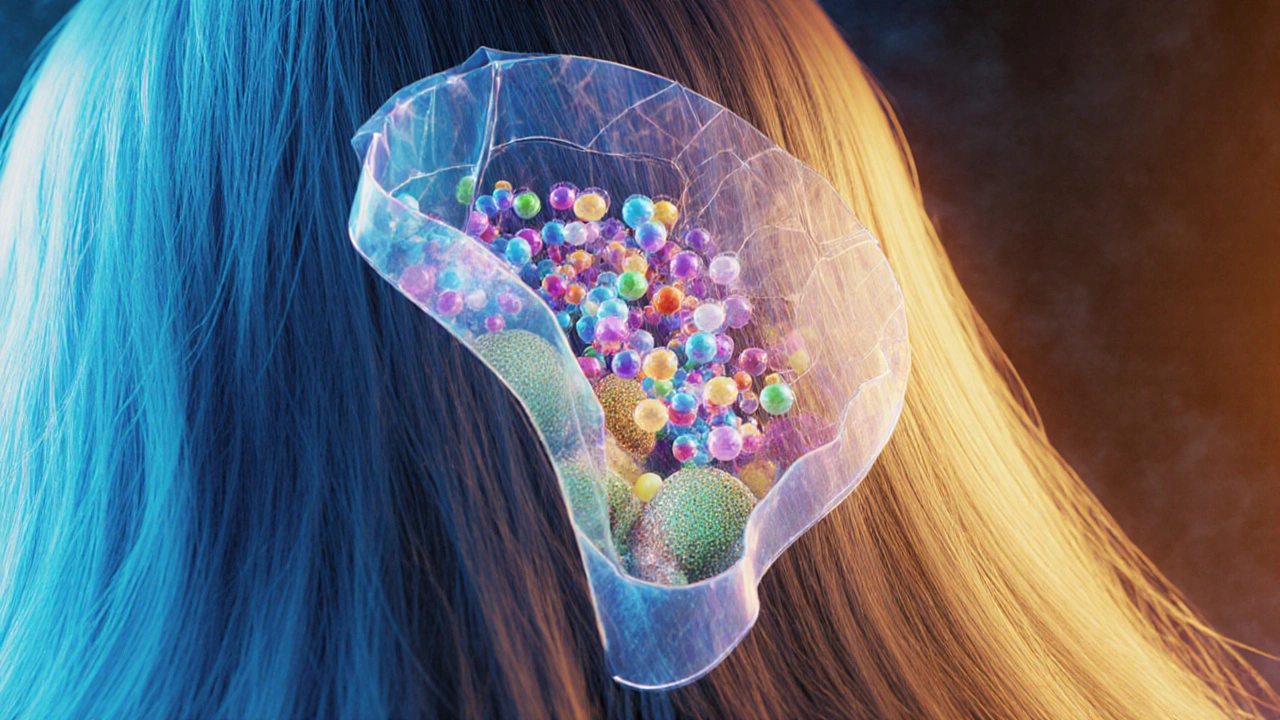When you see ammonia in hair dye, a strong chemical used to lift the hair cuticle so color can penetrate. Also known as ammonium hydroxide, it’s the main ingredient in most permanent hair color that lets you go from dark to blonde or cover grey completely. But ammonia doesn’t just lift color—it strips moisture, irritates scalps, and leaves hair brittle over time. If you’ve ever felt that burning sensation during a salon visit or noticed your hair feels straw-like after coloring, ammonia is likely why.
Many people don’t realize there are ammonia-free hair color, formulas that use alternatives like ethanolamine or MEA to open the cuticle without the harsh fumes. These options are gentler on sensitive skin and better for fine or damaged hair. Brands that focus on natural ingredients often skip ammonia entirely, using plant-based pigments and oils instead. This shift isn’t just a trend—it’s backed by real results from users who’ve switched and noticed less breakage, fewer scalp reactions, and healthier regrowth. The truth? You don’t need ammonia to cover grey or get vibrant color. Some of the safest hair dyes for Indian hair, for example, rely on henna or other botanicals that deposit color without lifting or damaging the strand. And if you’re worried about longevity, modern ammonia-free formulas can last just as long—especially if you avoid heat and wash less often.
But here’s the catch: not all ammonia-free products are created equal. Some still contain PPD or peroxide, which can be just as harsh. That’s why reading labels matters. Look for terms like "no ammonia," "no parabens," or "PPD-free." And if you’re switching from traditional dye, give your hair time to recover. Deep conditioning, reducing heat styling, and using sulfate-free shampoos help your strands bounce back.
What you’ll find in the posts below are real, practical guides on what works—and what doesn’t—when it comes to coloring your hair without the damage. From natural dye brands that actually cover grey to how mixing dye with conditioner can backfire, these articles cut through the noise. You’ll also see how waxing and threading connect to hair health, because what you do to your scalp and strands matters beyond just color. This isn’t about following trends. It’s about making smarter choices that keep your hair strong, your scalp calm, and your color looking fresh for longer.

Ammonia in hair dye opens the hair cuticle to let color penetrate deeply, making it essential for permanent, high-lift results. But it's not the only option - ammonia-free formulas exist, with trade-offs in coverage and longevity.